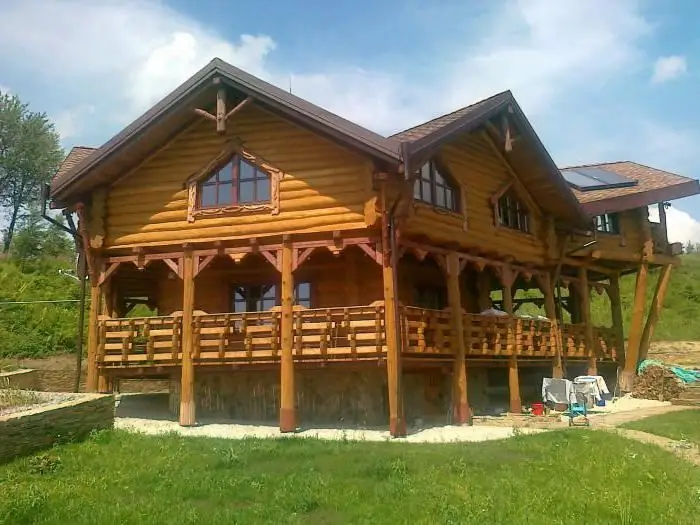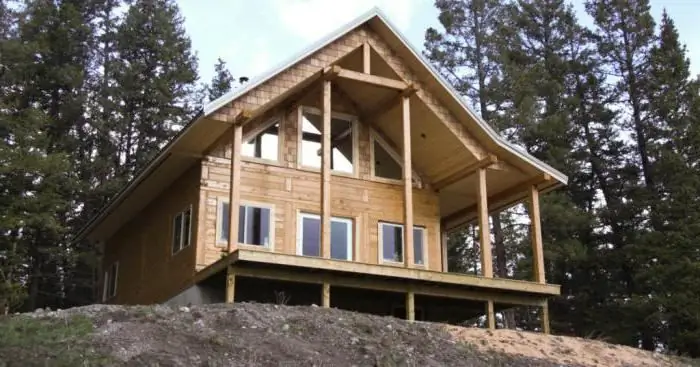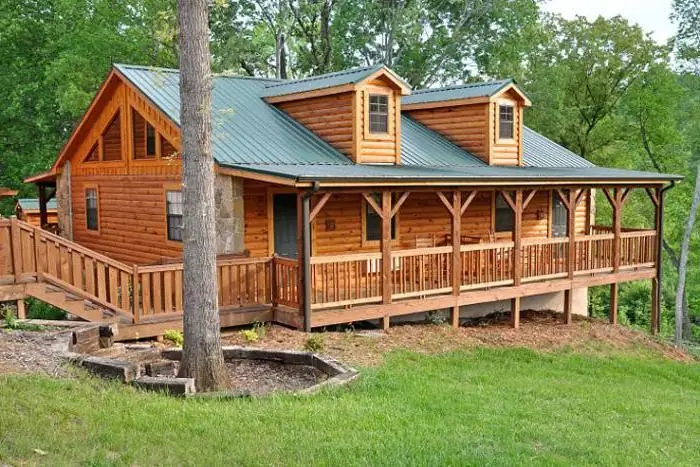Houses made of beams or logs will be warm and durable if the construction technology is not violated. They are built easier and faster than stone buildings. The construction of a log house requires minimal costs, there is no need to attract heavy equipment, all materials and tools are available and inexpensive. But every wooden building undergoes a dangerous process - shrinkage, which can adversely affect its strength and aesthetic data. And in order to avoid possible negative consequences, or at least minimize them, it is recommended to use a shrinkage compensator during the construction of the log house.

Shrinkage of a wooden house
The log house shrinks within 3-5 years after its construction. It is impossible to prevent this process. The cause of shrinkage is moisture in the log or timber. For construction, wood must be used, the moisture content of which is less than 20%. But not everyone, due to their financial or other capabilities, can purchase absolutely dry material. And logs and timber, like any wood, undergo compression when dried.and swelling when wet.
Moisture from the wooden walls of the log house comes out unevenly. For example, the south side of the house dries out faster, the crowns inside the room, if it is heated, etc. All this leads to cracking of the beam (log) and, most dangerous, to warping of the walls, violation of the log geometry.
Compensators for log house shrinkage
Scientists have been trying for many years to find a way to prevent the effects of uneven drying of a wooden building. And yet they found a solution - they invented a beam and log shrinkage compensator, thanks to which the walls of the erected log house became more stable and warm.

Previously, planks were used as them, which were placed under vertical pillars and, as the crowns of the log house dried out, they were knocked out or squashed. Now there are several companies that manufacture building products for wooden houses, including screw and spring expansion joints.
Screw expansion joints
They are used to install vertical poles from above (from below) on the terraces of a wooden building, open verandas, upper floors, etc. It is easy to work with them, you can control and adjust the geometry of the log house yourself without the involvement of assistants. The screw shrinkage compensator is a bolt firmly attached to the base plate, which is fixed to the wooden base with self-tapping screws. On the other side there is a clamping plate with a nut. As the wooden material dries, it must be twisted. Initially, it is placed in the untwisted state. The clamping bar is also firmly attached to the log or timber.
It is necessary to drill a hole in order to install a screw compensator in a vertical column so that it can freely enter it. In the first year, the percentage of shrinkage of the log house is the largest, you need to follow the changes and adjust the geometry of the building with a nut every month.

Spring expansion joints
Spring compensators consist of a strong steel spring, a long self-tapping screw and a capercaillie. They speed up and facilitate the process of shrinkage of the log house and at the same time firmly fasten the crowns to each other. Installing them is easy. During the construction of the log house, they are screwed into a pre-drilled hole with a drill. Spring compensators will not corrode, because they are treated with a special protective agent. Their work does not need to be controlled, they will “automatically” monitor the shrinkage of the log house and, if necessary, fully compensate for it.
Spring shrinkage compensator costs a lot. Therefore, in order to save money, you can use it to fix only the upper part of the log house, and fix the bottom with wooden dowels. After all, the first crowns are provided with the necessary load, and the upper weight of the roof and roof is not enough, so large interventional gaps will form, which will lead to heat loss.

Benefits of Spring Shrinkage Compensator
The spring assembly not only compensates for shrinkage, but also provides the walls of the log house with a load of about 100 kg/s. And on a logor the beam must be installed with about 4 such bolts, thereby providing a pressure of 400 kg / s. Thanks to this, there will be no gaps between the crowns and no secondary caulking is needed. The walls of a wooden house will not warp, and the room will be warm and cozy.
Using building products such as shrinkage compensators in the construction of a wooden building, many problems can be avoided in the future. It will be possible to forget about constant insulation and, most importantly, not to be afraid that the geometry of the entire log house will be violated.






